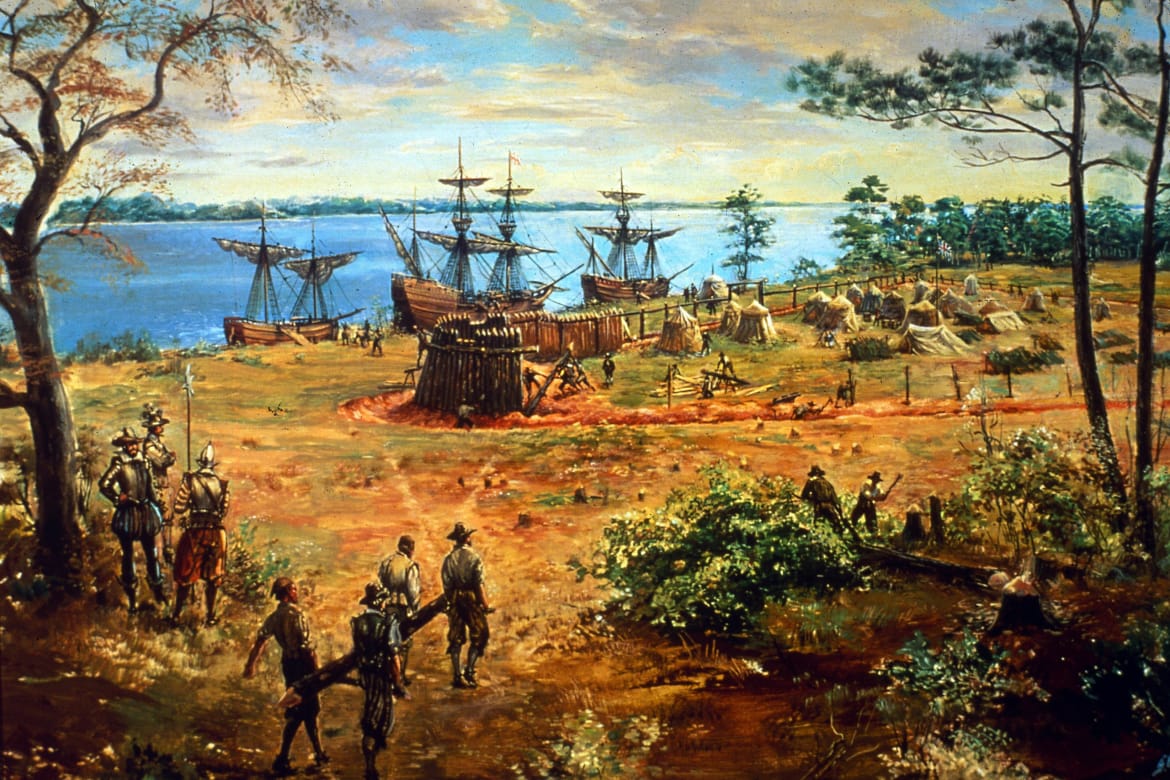O' Be Joyful
ohio hillbilly
- Joined
- May 12, 2019
- Messages
- 3,491
- Reaction score
- 3,136
Four hundred years ago this year, two momentous events happened in Britain’s fledgling colony in Virginia: the New World’s first democratic assembly convened, and an English privateer brought kidnapped Africans to sell as slaves. Such were the conflicted origins of modern America.
James Horn

(snip)
Along the banks of the James River, Virginia, during an oppressively hot spell in the middle of summer 1619, two events occurred within a few weeks of each other that would profoundly shape the course of history. Convened with little fanfare or formality, the first gathering of a representative governing body anywhere in the Americas, the General Assembly, met from July 30 to August 4 in the choir of the newly built church at Jamestown. Following instructions from the Virginia Company of London, the colony’s financial backers, the meeting’s principal purpose was to introduce “just Laws for the happy guiding and governing of the people.” The assembly sat as a single body and was made up of the governor, Sir George Yeardley, his four councilors, and twenty-two burgesses chosen by the free, white, male inhabitants of every town, corporation, and large plantation throughout the colony.
America democracy was conflicted from the beginning, with the first elected assembly and first sale of slaves both happening in 1619.
A few weeks later, a battered English privateer, the White Lion, entered the Chesapeake Bay and anchored off Point Comfort, a small but thriving maritime community at the mouth of the James River that was often a first port of call for oceangoing ships. While roving in the Caribbean, the ship, together with its companion, the Treasurer, had been involved in a fierce battle with a Portuguese slaver bound for Veracruz. Victorious, the two privateers pillaged the Portuguese vessel and sailed away northward carrying dozens of enslaved Africans.
https://www.americanheritage.com/1619-year-shaped-america
James Horn
- Winter 2019
Volume
64
Issue
1

(snip)
Along the banks of the James River, Virginia, during an oppressively hot spell in the middle of summer 1619, two events occurred within a few weeks of each other that would profoundly shape the course of history. Convened with little fanfare or formality, the first gathering of a representative governing body anywhere in the Americas, the General Assembly, met from July 30 to August 4 in the choir of the newly built church at Jamestown. Following instructions from the Virginia Company of London, the colony’s financial backers, the meeting’s principal purpose was to introduce “just Laws for the happy guiding and governing of the people.” The assembly sat as a single body and was made up of the governor, Sir George Yeardley, his four councilors, and twenty-two burgesses chosen by the free, white, male inhabitants of every town, corporation, and large plantation throughout the colony.
America democracy was conflicted from the beginning, with the first elected assembly and first sale of slaves both happening in 1619.
A few weeks later, a battered English privateer, the White Lion, entered the Chesapeake Bay and anchored off Point Comfort, a small but thriving maritime community at the mouth of the James River that was often a first port of call for oceangoing ships. While roving in the Caribbean, the ship, together with its companion, the Treasurer, had been involved in a fierce battle with a Portuguese slaver bound for Veracruz. Victorious, the two privateers pillaged the Portuguese vessel and sailed away northward carrying dozens of enslaved Africans.
https://www.americanheritage.com/1619-year-shaped-america
